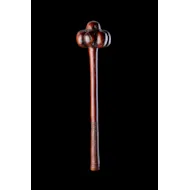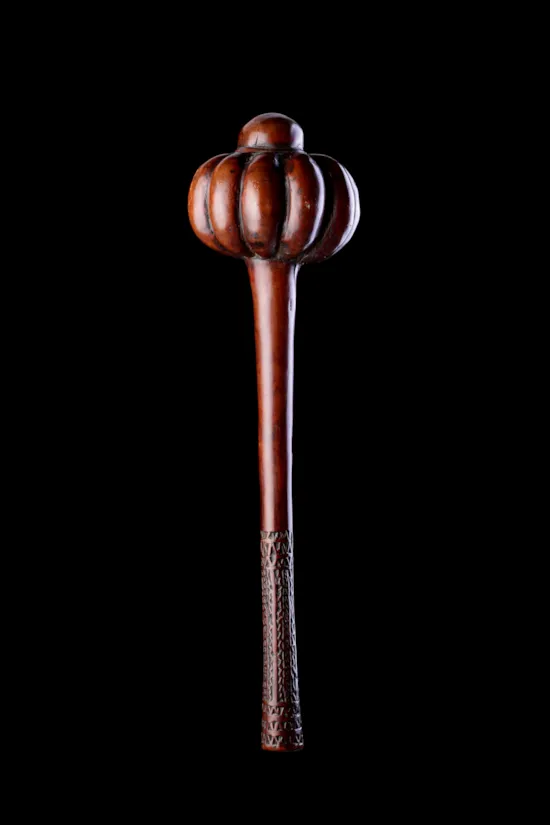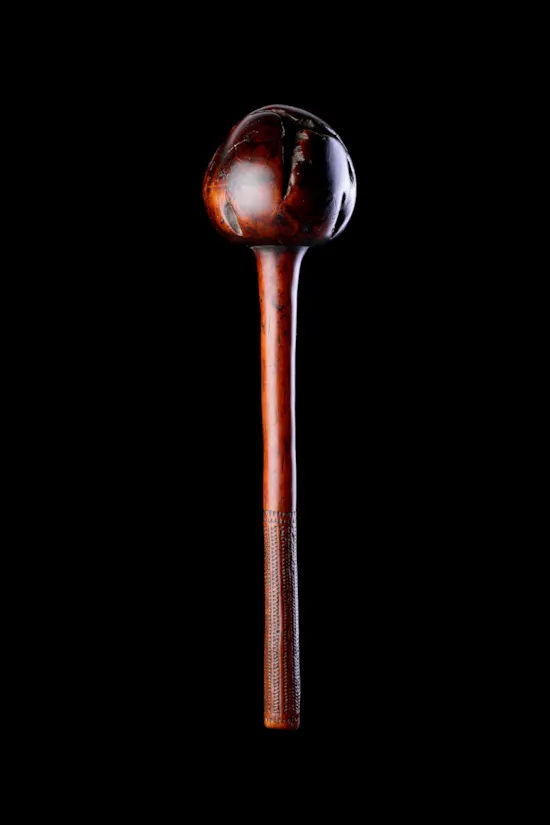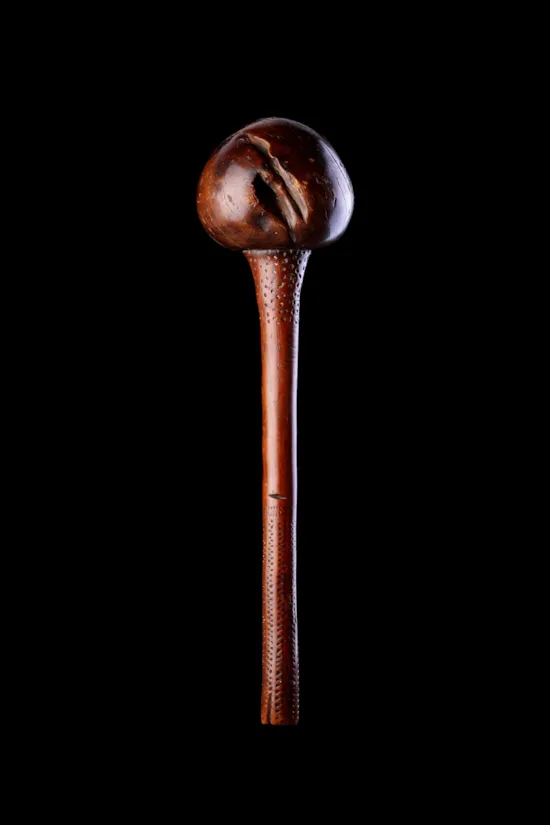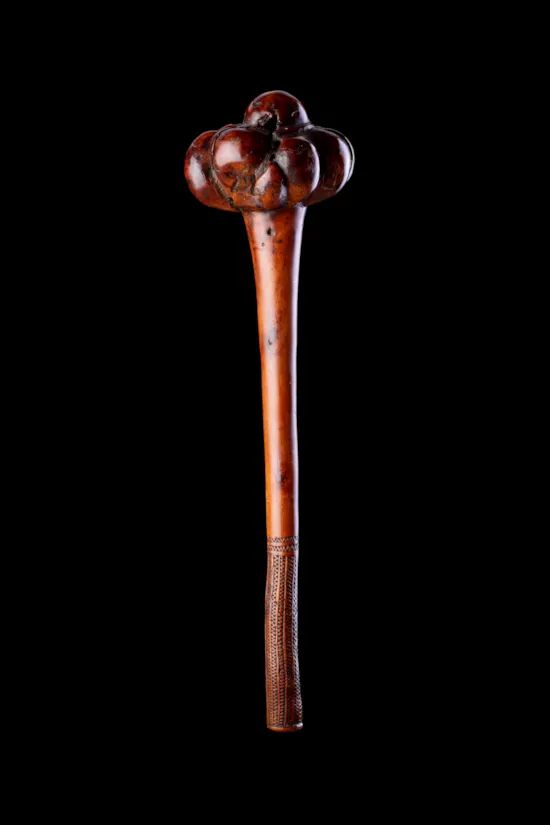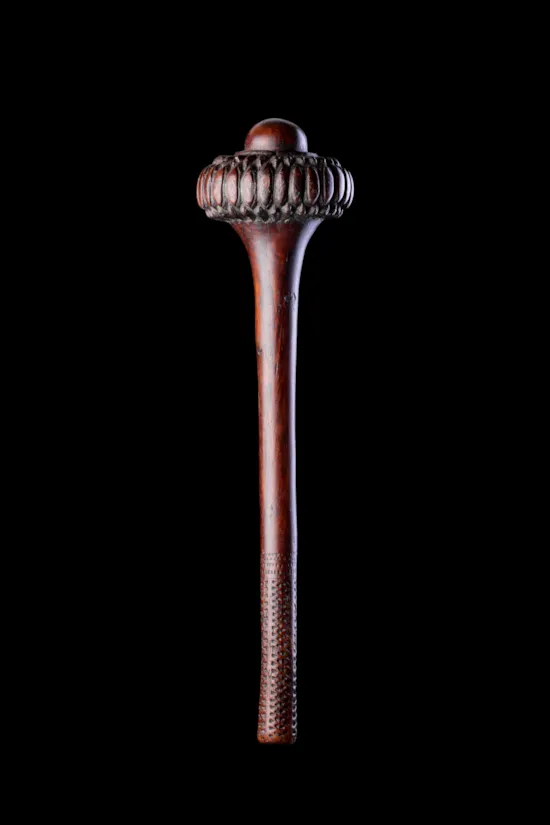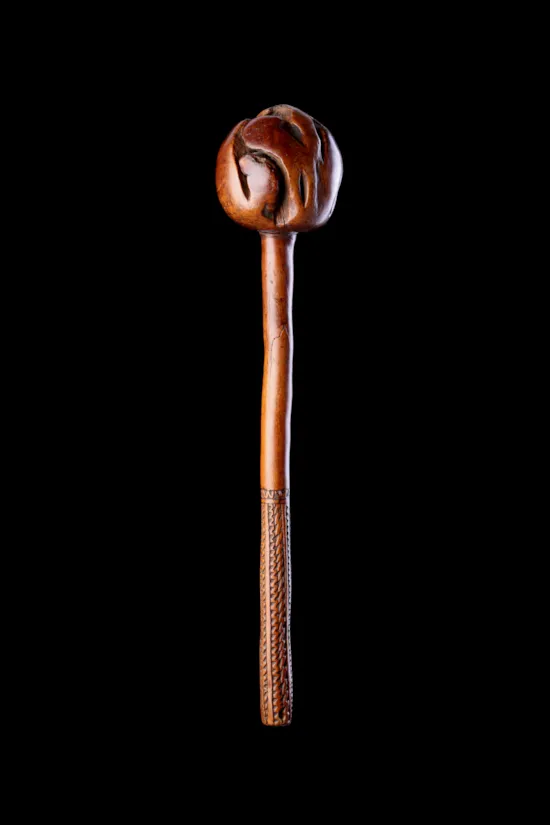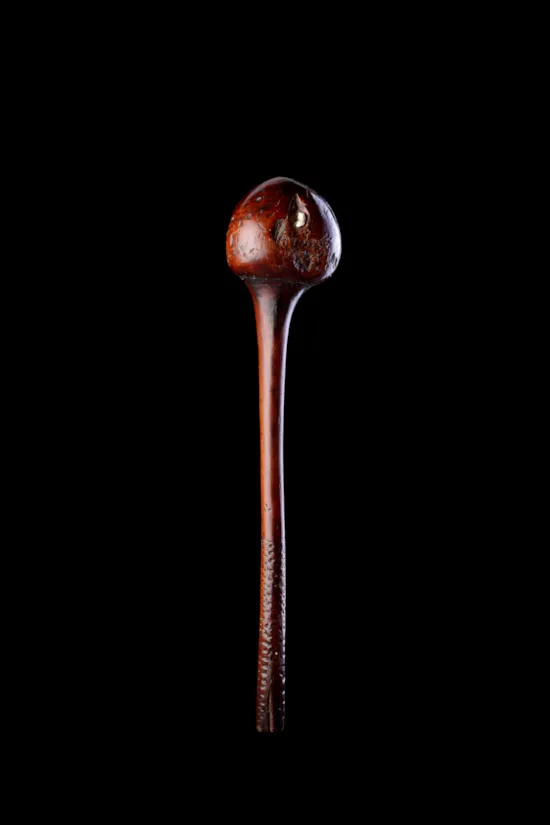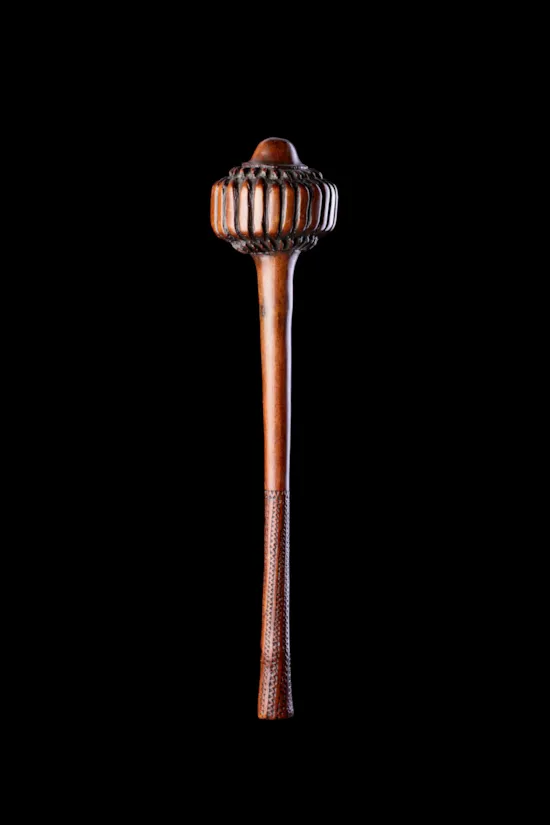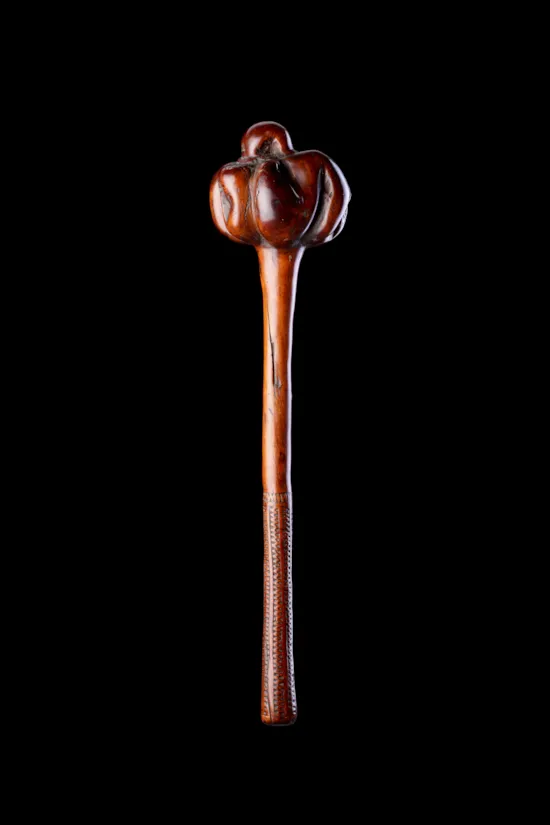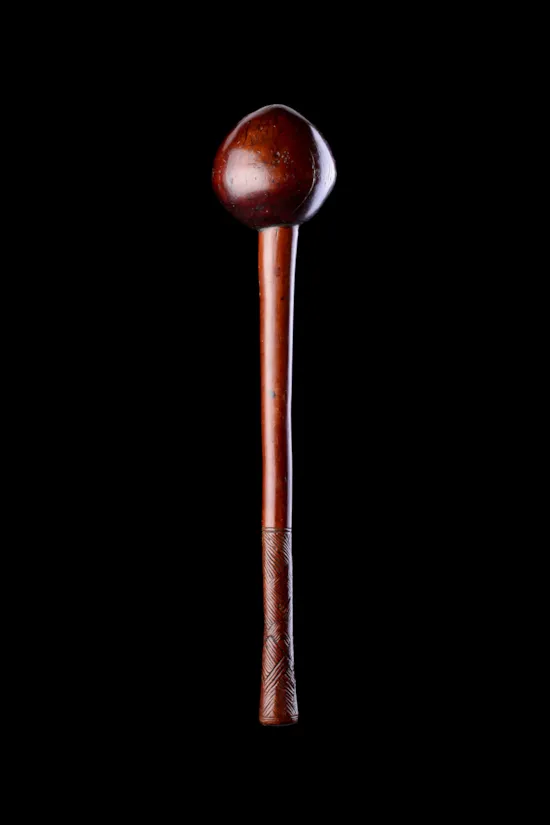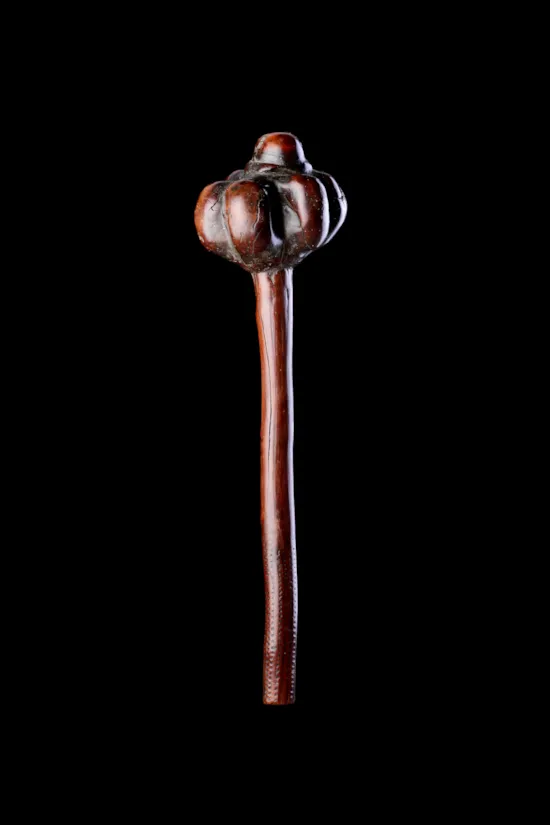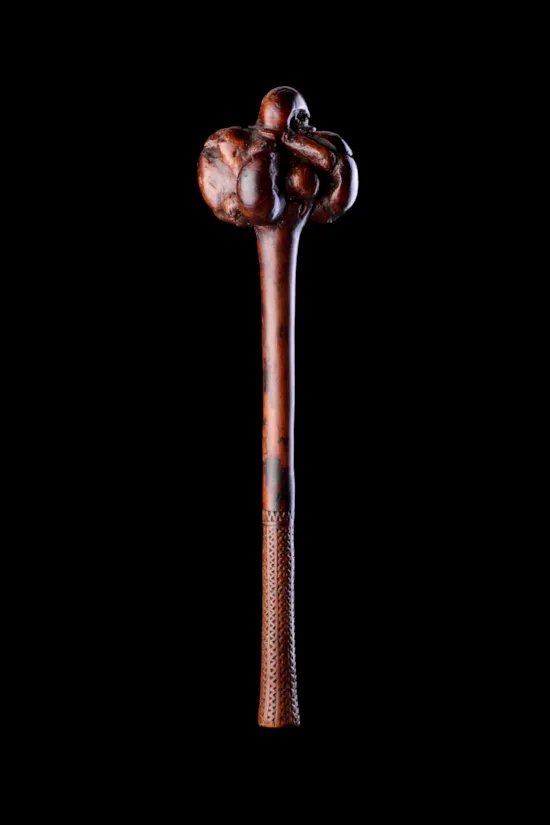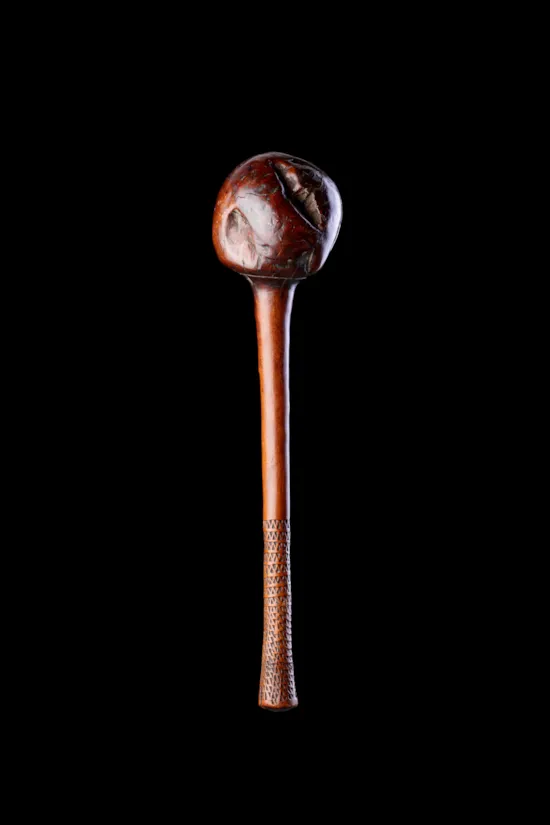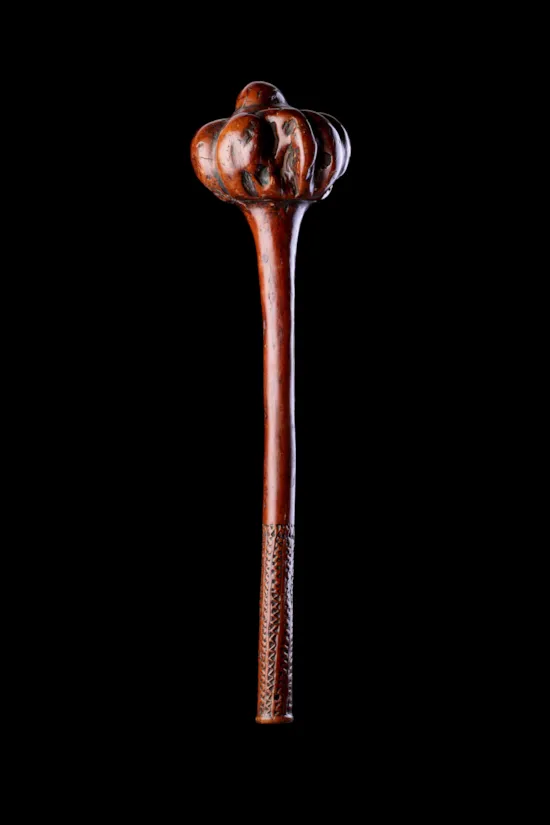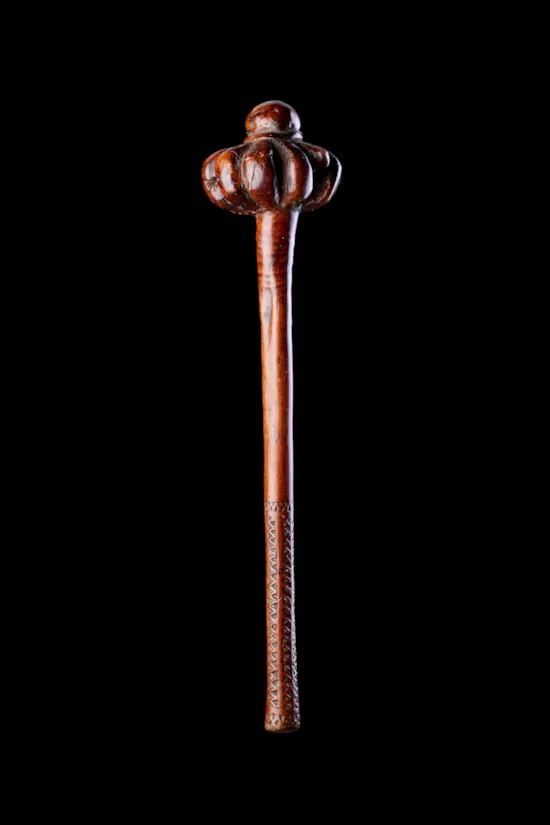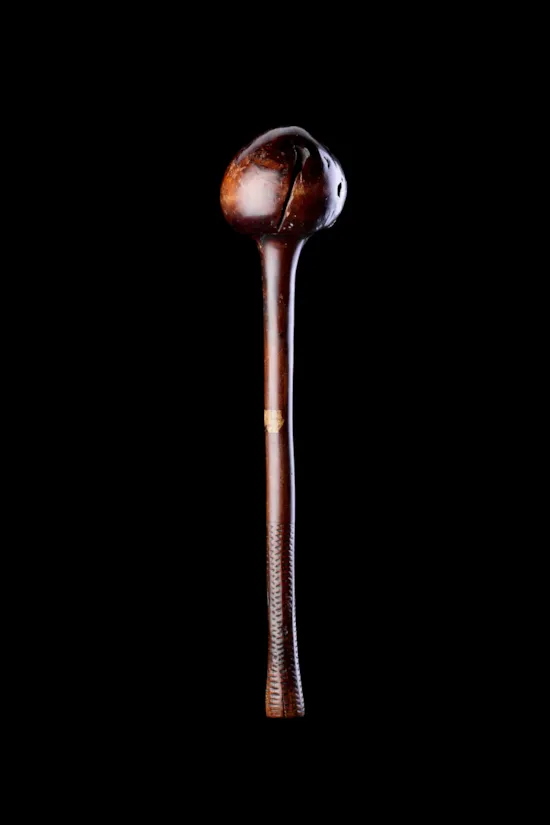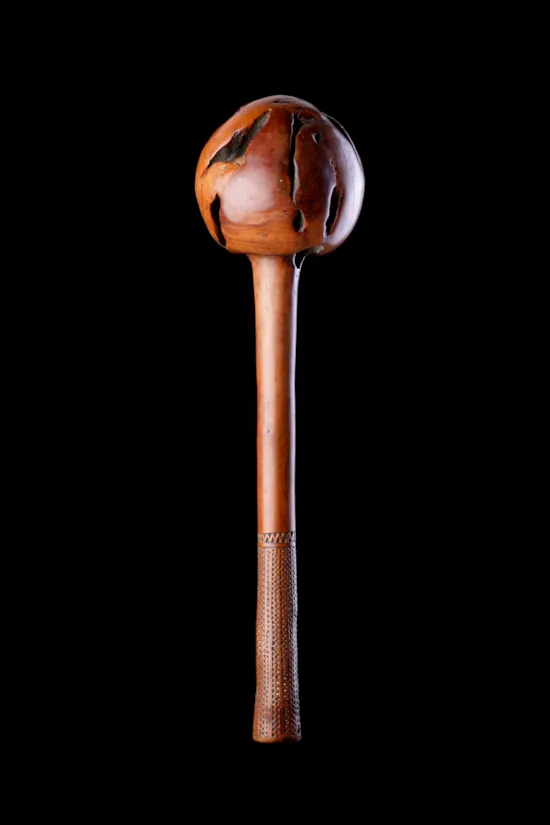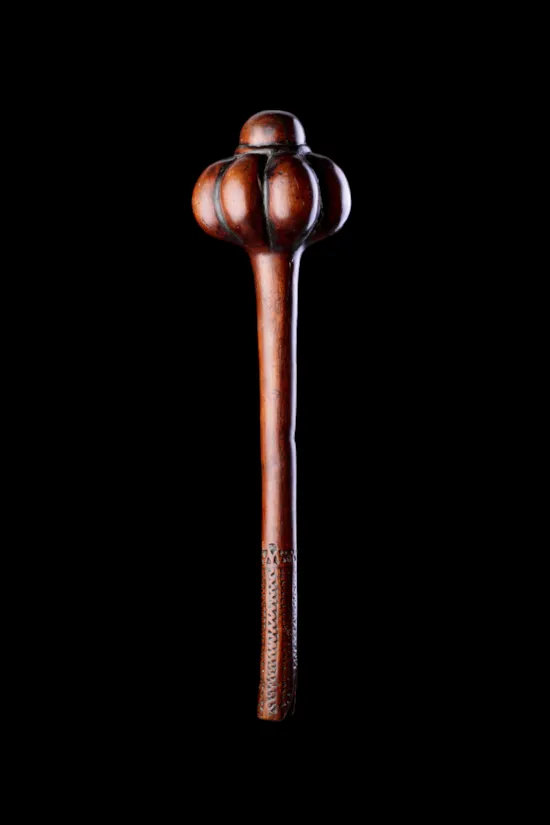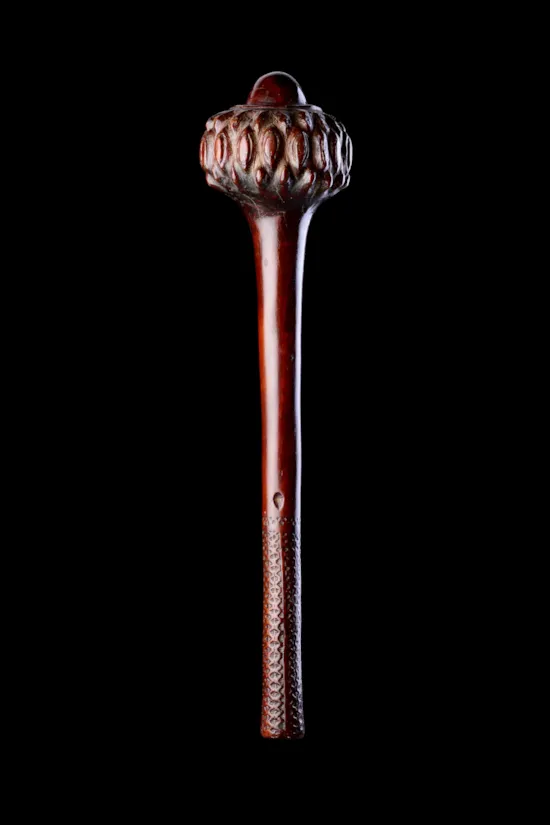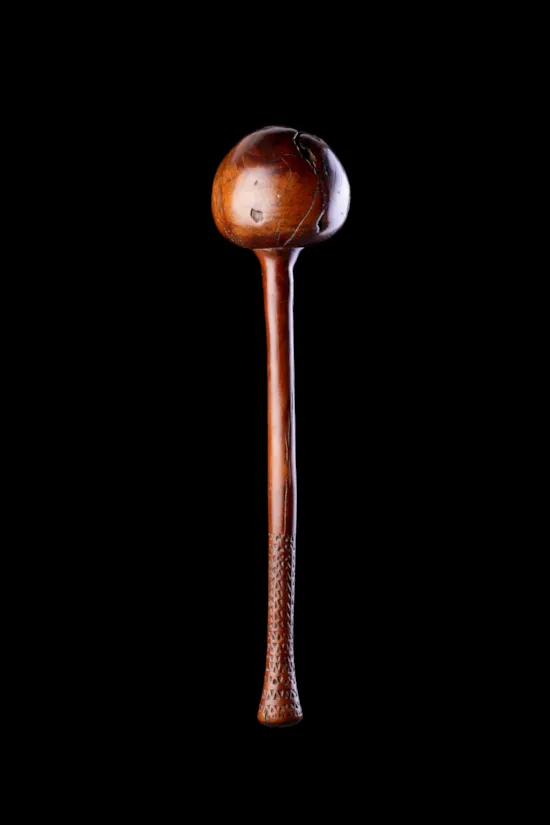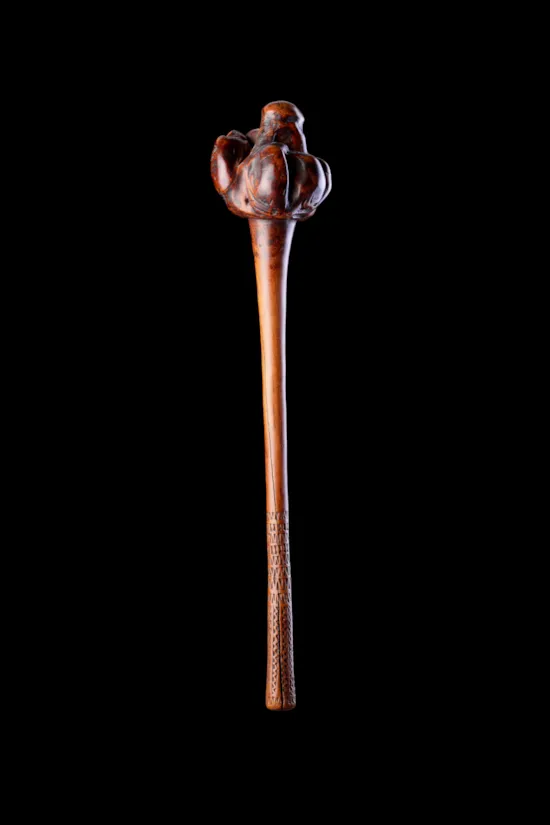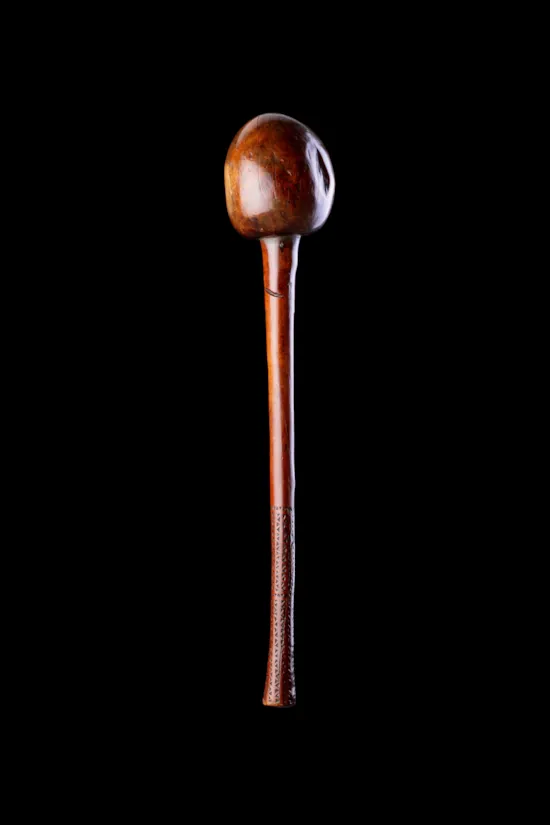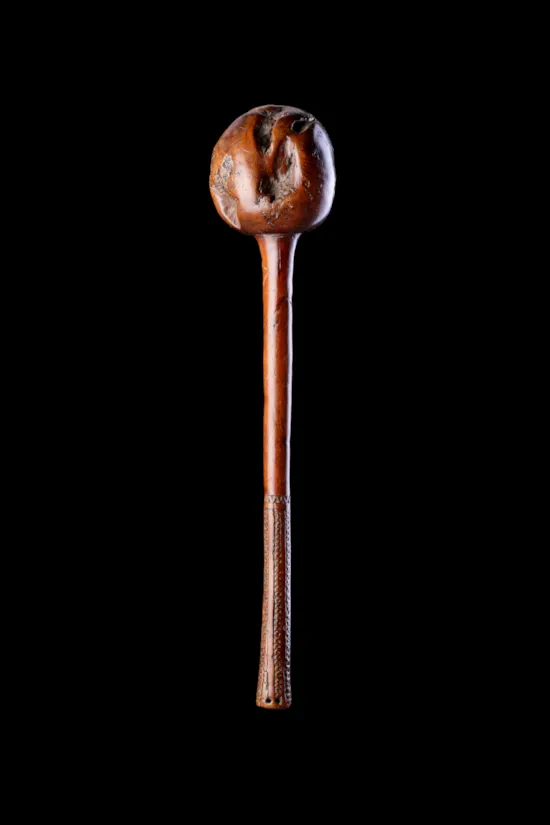Collection of Thirty Oceanic Fijian Hardwood ‘I Ula’s’
A Collection of Thirty Oceanic Fijian Hardwood ‘I Ula’s’ Displaying the Various Types Used as Throwing or Missile Clubs for Hunting or Fighting Weapons
One inlaid with a human tooth several with notched markings signifying a tally of kills
All with old smooth silky patina
Fiji
18th – Early 19th Century
One inlaid with a human tooth several with notched markings signifying a tally of kills
All with old smooth silky patina
Fiji
18th – Early 19th Century
A Collection of Thirty Oceanic Fijian Hardwood ‘I Ula’s’ Displaying the Various Types Used as Throwing or Missile Clubs for Hunting or Fighting Weapons
One inlaid with a human tooth several with notched markings signifying a tally of kills
All with old smooth silky patina
18th – Early 19th Century
Fiji
Sizes: min: 37.5cm long - 14¾ ins long / max: 45cm long - 17¾ ins long
One inlaid with a human tooth several with notched markings signifying a tally of kills
All with old smooth silky patina
18th – Early 19th Century
Fiji
Sizes: min: 37.5cm long - 14¾ ins long / max: 45cm long - 17¾ ins long
Prior to the arrival of the British colonialists and missionaries on the Islands, warfare was central to Fijian art and culture. A man’s social standing and prestige was determined not only by hereditary status, but also by his achievements as a warrior and the most prestigious of all Fijian weapons was the club. Oral traditions on the Islands suggest that their indigenous weapons being used in the 19th century were identical to those that had been used for at least 200 to 300 years before.
These small clubs were created to be hurled as projectiles with a specific revolving technique that was learnt from boyhood. It was the most personal weapon of the Fijian warrior with virtually every man wearing at least one, and often two through his girdle much like a brace of pistols. Primarily they were meant for throwing at an enemy with the aim of killing him outright, or temporarily stunning him so that he could be finished off with a heavy two handed club. Typical throwing clubs used for fighting had heavy rounded or fluted heads issuing from a straight thick shaft made from a single piece of wood. The lighter clubs were used for hunting pigeons and large flying fox bats. Some were used for dancing, and others were regarded as sacred being used in divination ceremonies, as well as for ritual healing and in the malignant cursing of enemies.
Most clubs were created by uprooting a young tree and trimming off the roots to form a head similar to the shape of a European mace. Each one was commissioned from specialised craftsmen known as ‘Matai Ni Malumu’ who made the club to suit the physique, status and needs of the customer. The buttress roots of hardwood tree saplings were often trained by binding with coir or pandanus leaf cords when young to produce the bulbous shaped indented head. The handle grips generally shared a common motif consisting of a series of zigzag or wavy lines called ‘tavatava’ and this decorative carving was added by a second specialist who took no part in the initial balancing and shaping of the weapon. These finishing touches were added by means of shark’s teeth or the spines of sea urchins set in a wooden handle.
Known to European sailors in the 19th century as ‘Handy Billy’ because of the speed and accuracy with which it was hurled and its conveniently portable nature, ‘I Ula’ were essentially close range projectile weapons. They were often carried in addition to a heavier, bigger club in battle, but in times of peace they were everyday weapons that did not hinder a warrior’s movements unlike a larger spear or club.
These small clubs were created to be hurled as projectiles with a specific revolving technique that was learnt from boyhood. It was the most personal weapon of the Fijian warrior with virtually every man wearing at least one, and often two through his girdle much like a brace of pistols. Primarily they were meant for throwing at an enemy with the aim of killing him outright, or temporarily stunning him so that he could be finished off with a heavy two handed club. Typical throwing clubs used for fighting had heavy rounded or fluted heads issuing from a straight thick shaft made from a single piece of wood. The lighter clubs were used for hunting pigeons and large flying fox bats. Some were used for dancing, and others were regarded as sacred being used in divination ceremonies, as well as for ritual healing and in the malignant cursing of enemies.
Most clubs were created by uprooting a young tree and trimming off the roots to form a head similar to the shape of a European mace. Each one was commissioned from specialised craftsmen known as ‘Matai Ni Malumu’ who made the club to suit the physique, status and needs of the customer. The buttress roots of hardwood tree saplings were often trained by binding with coir or pandanus leaf cords when young to produce the bulbous shaped indented head. The handle grips generally shared a common motif consisting of a series of zigzag or wavy lines called ‘tavatava’ and this decorative carving was added by a second specialist who took no part in the initial balancing and shaping of the weapon. These finishing touches were added by means of shark’s teeth or the spines of sea urchins set in a wooden handle.
Known to European sailors in the 19th century as ‘Handy Billy’ because of the speed and accuracy with which it was hurled and its conveniently portable nature, ‘I Ula’ were essentially close range projectile weapons. They were often carried in addition to a heavier, bigger club in battle, but in times of peace they were everyday weapons that did not hinder a warrior’s movements unlike a larger spear or club.
Ex Private UK collection
Collection of Thirty Oceanic Fijian Hardwood ‘I Ula’s’
